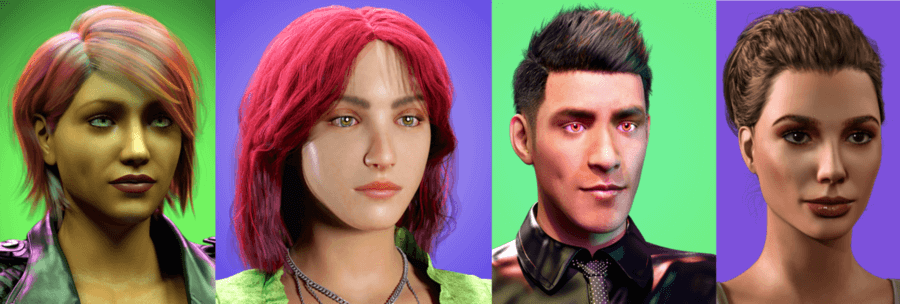The Ultimate Guide to 3D NFTs: Understanding, Creating, and Owning Digital 3d Art on the Blockchain

Basics of 3D NFTs
While 2D NFTs are digital images or animations that exist on a two-dimensional plane, 3D NFTs are more complex digital objects that exist in a three-dimensional space, like a sculpture or a physical object. They can be created using specialized software like Blender, Maya, or Cinema 4D, which allow artists to create and manipulate 3D models in a virtual environment.
Because of their complexity and resource-intensive nature, 3D NFTs tend to be more expensive and sought-after than 2D NFTs. However, both types of NFTs can be valuable and have their own unique properties and uses. Infact some NFTs even combine elements of both 2D and 3D art, using techniques like motion graphics or interactive animations to create engaging and dynamic digital experiences.
Applications of 2D and 3D NFTs in various industries
2D and 3D NFTs have various applications in different industries, from art and music to gaming and real estate. Let's delve into the difference between 2D and 3D NFTs in various industries.
Art:
2D NFTs include digital paintings, illustrations, and animations that are sold as unique, one-of-a-kind works of art on the blockchain. 3D NFTs include virtual sculptures and installations that can be viewed and experienced in virtual reality.
Music:
2D NFTs include digital album art or concert posters that are sold as NFTs and include unique, limited edition perks like backstage passes or signed merchandise. On the other hand, 3D NFTs include virtual concert venues or instruments that can be viewed and interacted with in a virtual environment.
Gaming:
2D NFTs include in-game assets like skins, weapons, or power-ups that are sold as NFTs and can be used across multiple games or platforms. In contrast, 3D NFTs include 3D models of characters, vehicles, or environments that can be used in game development or as collectibles for players.
Real Estate:
2D NFTs include virtual floor plans, blueprints, or architectural drawings that are sold as NFTs and can be used to showcase a property. Whereas, 3D NFTs include virtual tours or models of real estate properties that can be viewed and experienced in virtual reality.
Fashion:
2D NFTs include digital fashion designs, prints, or patterns that are sold as unique, limited edition items on the blockchain. 3D NFTs include virtual clothing or accessories that can be viewed and experienced in virtual reality or used in video game development.
Importance of NFTs in the digital art world
The importance of 3D NFTs in the digital art world lies in their ability to provide a unique and immersive experience for viewers and collectors. With 3D models, artists can create digital sculptures and installations that can be viewed and experienced in virtual reality, providing a new level of interactivity and engagement. Additionally, 3D NFTs tend to be more resource-intensive and difficult to create, making them more valuable and sought-after in the marketplace. As the popularity of NFTs continues to grow, the importance of 3D NFTs in the digital art world is only set to increase.
If you plan to convert 2D NFTs to 3D, here are some considerations and best practices to keep in mind:
Artistic vision:
When converting a 2D NFT to 3D, it's important to have a clear artistic vision for the final product. The 3D model should stay true to the original artwork and preserve the artist's intended message and aesthetic.
Quality and fidelity:
The 3D model should be of high quality and fidelity, with attention paid to details such as texture, lighting, and color. This is especially important if the 3D model will be used in applications such as virtual reality or gaming.
Compatibility:
The 3D model should be compatible with the platforms and applications in which it will be used. For example, if the 3D model will be used in a video game engine, it should be optimized for real-time rendering.
Legal considerations:
Any necessary licenses and permissions should be obtained before converting a 2D NFT to 3D. This includes obtaining permission from the original artist or copyright holder, as well as ensuring that any third-party assets used in the creation of the 3D model are properly licensed. It's important to understand the legal implications of creating and selling NFTs, as well as the potential tax implications.
Conclusion:
In conclusion, 3D NFTs are a complex and fascinating form of digital art that offer unique opportunities for artists, collectors, and investors. By understanding the basics of NFTs and their importance in the digital art world, as well as the process of creating and selling NFTs, artists and collectors can take advantage of this exciting new market. Converting 2D NFTs to 3D can be a challenging and resource-intensive process, but with careful consideration of artistic vision, quality and fidelity, compatibility, and legal considerations, it can be a worthwhile and rewarding endeavor. With the continued growth of the NFT market, there is no better time to start exploring the world of 3D NFTs.




